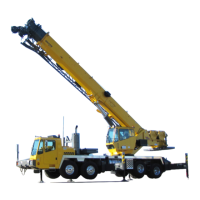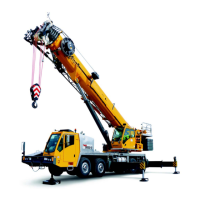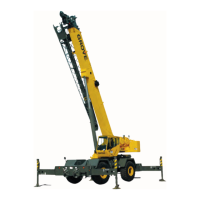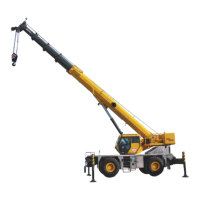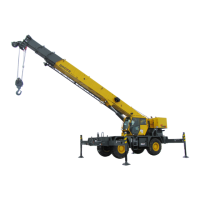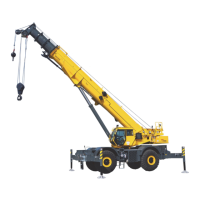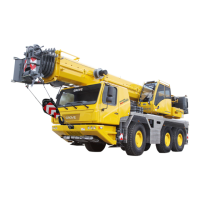8-53
TMS800E SERVICE MANUAL UNDERCARRIAGE
Published 01-29-2014, Control # 496-00
Pressure Protection Valve
The purpose of the pressure protection valve (Figure 8-72) is
to isolate one system from the other by closing at a preset
pressure. One valve isolates the primary system from the
secondary system, one valve isolates the auxiliary system
from the primary system, and the other isolates the tire
inflation system from the primary system. The valve is a
normally closed valve which can also be referred to as a non-
exhausting sequencing valve. Refer to Pressure Protection
Valve illustration.
The valve has two ports: a supply port and a delivery port.
The closing pressure is 5.86 bar (85 psi) and opening
pressure is about 1.03 to 1.38 bar (15 to 20 psi) higher than
the closing pressure. The valve is preset to the specified
opening and closing pressures.
Relay Valve
The purpose of the two piston operated relay valves
(Figure 8-73) is to speed up application of the service
brakes. The valve is remote mounted and delivers air to the
brakes in response to signals from the foot brake control
valves.
One valve is mounted on the front of the frame for front
service brakes and one is mounted on the rear of the frame
for the rear service brakes. Air pressure, which controls the
valve, enters through the service port to either deliver or
exhaust air pressure from the circuits serviced by the relay
valve.
Exhaust
Port
Release
Pin
FIGURE 8-71
Pressure
Regulating
Spring
Inlet
Outlet
FIGURE 8-72
Reference Only
